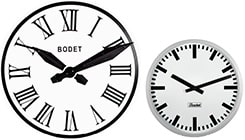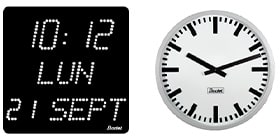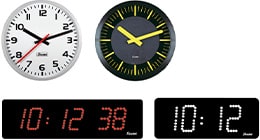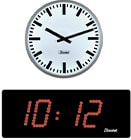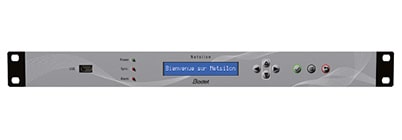Which clocks to choose to display an accurate time in a railway station or an underground station?
Whether analogue, digital, for indoor or outdoor use, railway station and underground station clocks must display a reliable, accurate and precise time.
All Bodet analogue and digital NTP clocks are connected to the existing computer network and synchronised with the time information distributed by a Netsilon time server. They guarantee a reliable, accurate, secure and identical time display throughout the entire public rail transport network: train, underground.
Why displaying a reliable, accurate and synchronised time in a railway station or an underground station?
Being provided with reliable and precise time is essential for both railway station employees and passengers. It is therefore essential to display an accurate time in strategic areas of a railway station or an underground station.
As a result, it is vital to provide an identical time across the entire infrastructure. Using an NTP time server to synchronise time allows preventing delays, incidents on the tracks, out-of-sync clocks while maintaining an efficient internal organisation: ticketing, signalling, traffic management and supervision systems for accurate timestamping of events.
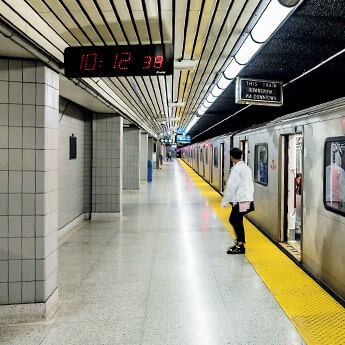
What I like about the Netsilon time server is that it is modular and easy to configure. I appreciate having a single supplier for time servers and clocks. It’s a real time saver when managing a project
Project Manager,
SICE Toronto
Using a time server for ensuring synchronised time in railway stations and underground stations
A time server controls the operational running of clocks and any other equipment installed in the railway structure
Responsible for providing an accurate, reliable and identical time to all equipment, a time server distributes a synchronised time across the entire passenger area…
- Broadcasting of an identical time on all the clocks installed on platforms, reception points and passenger waiting areas
- Synchronisation of operational systems: payment terminals, ticketing, passenger information system (PIS)
- Synchronisation of equipment and instruments to UTC time
- Accurate timestamping of events, especially for security and video surveillance systems
… as well as to all control centre equipment: control and signal boxes dedicated to staff
- Accurate and secure synchronisation of your traffic control and management solutions
- Accurate timestamping using monitoring systems. Traceability of events detailed in log files
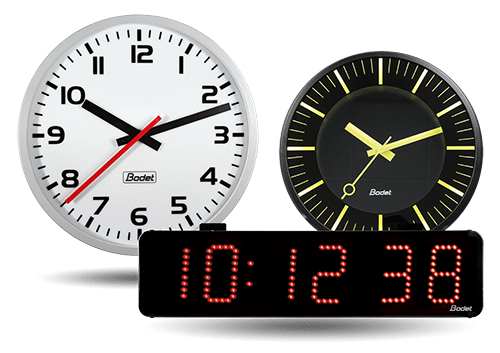
Reliable and accurate railway station clocks, all synchronised to an identical time.
Installed in unlimited numbers on railway station or underground platforms, they all display the same time
Passengers pay particular attention to time display so as not to miss the departure.
- Synchronised by a time server and installed in unlimited numbers across an entire railway station or underground, NTP clocks display reliable, accurate and precise time.
- They are connected to the existing network cabling of a railway station or an underground and known for their ease of installation and commissioning.
Designed for railways and customisable, the Bodet NTP analogue clocks provide optimum readability regardless of the place in which they are installed: railway station concourse, railway station platforms or underground platforms.
The NTP digital clocks fit perfectly into both railway station platforms and underground platforms. They are luminous in order to be seen from a distance, and they withstand impacts, dust and external damage.
How to equip a railway station or an underground station for ensuring a synchronised time display?
Clocks suitable and designed for all areas of a railway station or underground
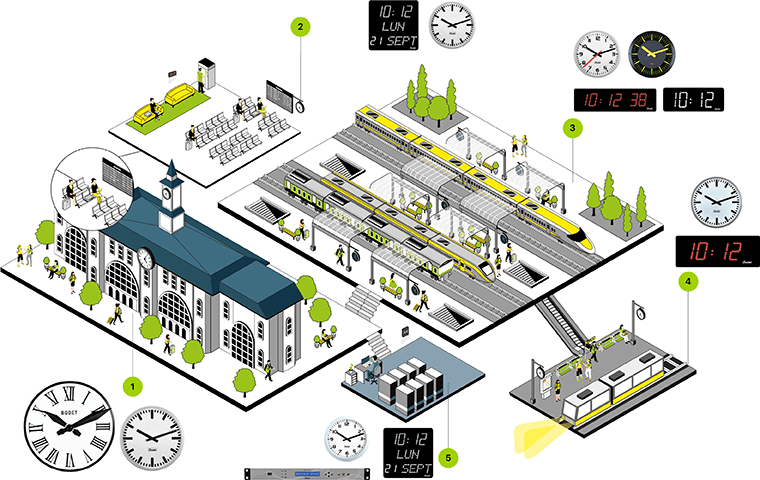
Installation example of a synchronised time distribution in a railway infrastructure (railway station and underground)
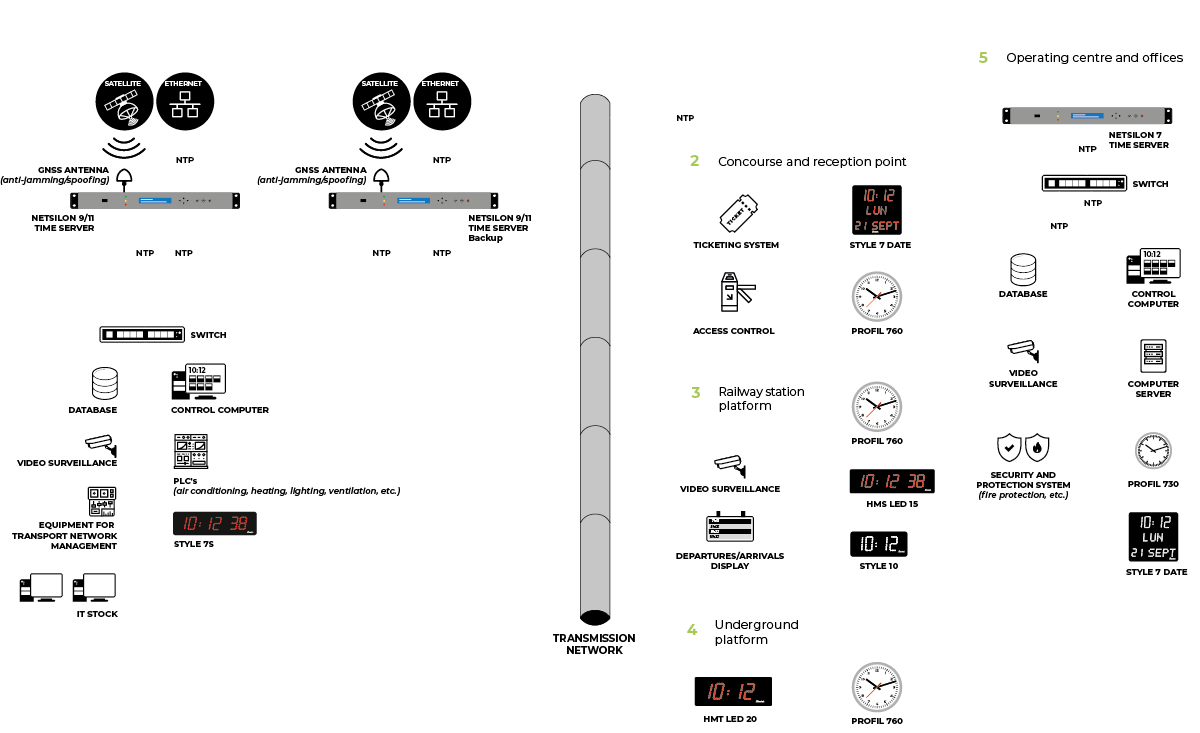

How to customise the facade of a railway station with a tower clock?
A tailor-made railway station clock to welcome all passengers
Every railway station or underground is unique and has its own visual identity. This is why our tower clocks can be customised: frame, marking, numbers, hands, colours, lighting, and so on. Everything is meant to meet the specific needs of railway structures and enhance station facades.
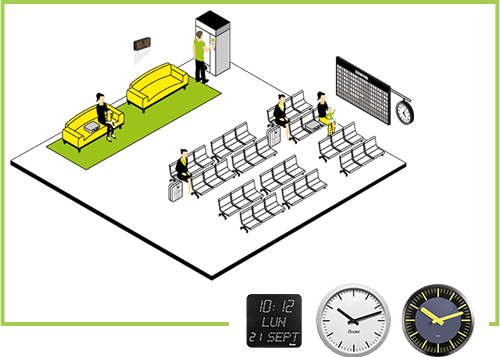
Which clock to choose for a railway station concourse?
A simple, accurate and legible time display
One of the main information passengers look for when arriving in the railway station concourse is the time. As a result, passengers are reassured and know exactly the time left before taking their train.
Whether analogue or digital, the Profil 940, Profil TGV 940 and Style 10 synchronised clocks can be used to read the time from up to 40 m away.
To meet the specific needs of railways, we recommend a time distribution via the NTP protocol which allows distribution of reliable and accurate time to an unlimited number of clocks.
These clocks are connected to the computer network and integrate a monitoring function via SNMP to ensure each clock is functioning as intended.
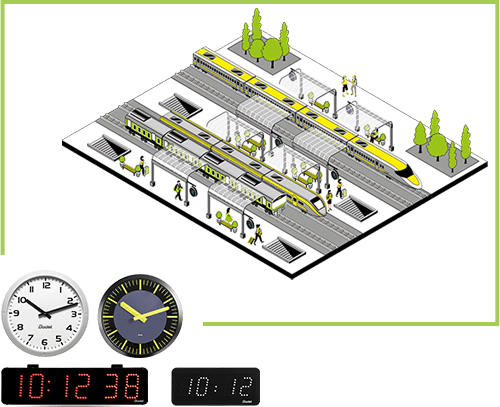
How to display an accurate time on railway station platforms?
Displaying a reliable, accurate and identical time information for station managers and passengers
It is essential that an accurate and unquestionable time is displayed for latecomers, the closing of doors or the station manager whistle blow.
As railway station platforms are on average 400 m long, in order to distribute a reliable and identical time to all clocks installed on railway station platforms, it is recommended to use:
- An NTP time distribution which, combined with a monitoring function via SNMP, helps reducing maintenance costs due to remote detection of anomalies
- or an AFNOR NFS 87-500 time coded wired time distribution with a range of up to 30 km
The Profil 760, Profil TGV 950 E outdoor analogue clocks or HMS LED 15 digital clocks have been designed to be visible both day and night, to withstand weather conditions, ballast stone impacts and any other damage.
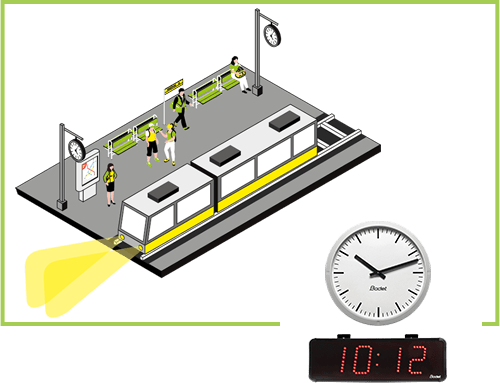
Which clock to install in underground stations?
An accurate and legible time
In order for time to be seen in an instant by passengers boarding an underground train, the Profil 780 double-sided analogue metal clocks and HMS LED 25 digital clocks meet all the needs of an underground line and offer a readability from up to 120 metres away.
Especially designed to be installed in underground environments, they are intended to be seen from a distance and to withstand vandalism.
Choosing a time distribution via NTP protocol ensures the underground station maintenance staff that all clocks are functioning correctly. Indeed, the Bodet NTP clocks are connected to the station computer network and integrate a monitoring function via SNMP, which allows remote detection of anomalies, and reduced maintenance costs.
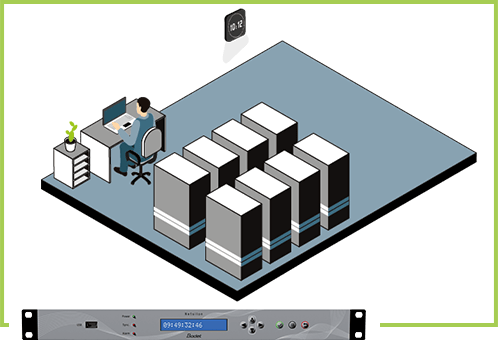
How to synchronise railway station clocks?
Delivering an accurate, identical and synchronised time throughout the railway network
Time display and synchronisation are at the heart of railway station operations, as they provide accurate, precise, identical and secure time to all network devices: voice, data, images.
Within the time distribution system, the time server broadcasts a reliable, accurate and synchronised time reference to the different railway station operational systems: clocks, payment terminals, ticketing, sound system, passenger information system (PIS), security and video surveillance system, signalling, fire alarm system, and so on.
A time server is connected to a secure satellite antenna and provides a reliable and highly secure time to railway subsystems. Choosing a time server means avoiding loss of time synchronisation and limiting the risks of cyberattacks.
To meet the specific needs of railways, the Netsilon time servers synchronise all devices in AFNOR NFS 87-500 coded time or via the IT network (NTP, PTP).
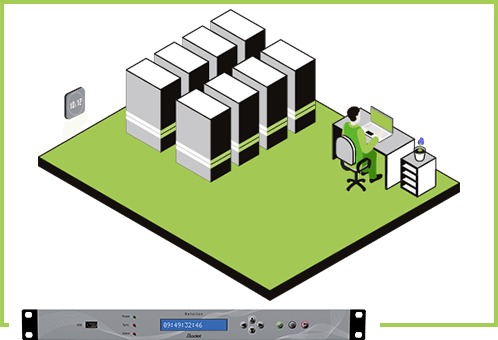
How to synchronise underground clocks?
In an underground station, the challenge is to coordinate all lines and stations. Time synchronisation acts like a metronome on all network equipment, such as payment terminals, ticketing systems, sound and passenger information systems, security and video surveillance systems, and so on.
A time server ensures that secure, reliable, accurate and identical time is transmitted throughout the entire infrastructure. It retrieves a reference time and distributes it to network subsystems.
To meet the needs of undergrounds and other public transports, the Netsilon time servers offer a time distribution via AFNOR NFS 87-500 coded time or via NTP computer protocol on the computer network.
Trust us with your
international project
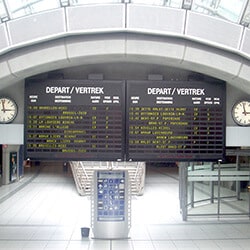
SNCB
Belgium
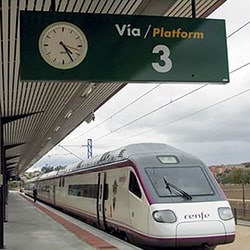
RENFE
Spain
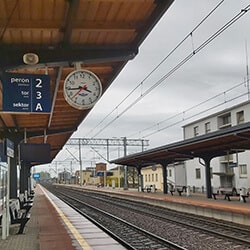
PKP
Poland
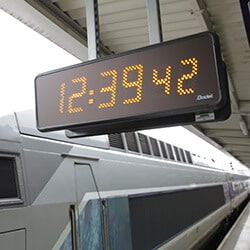
SNCF
France
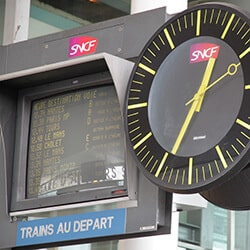
SNCF
France
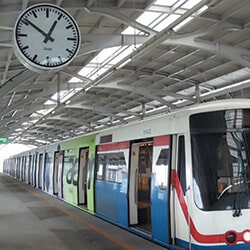
BTS Bangkok
Thailand
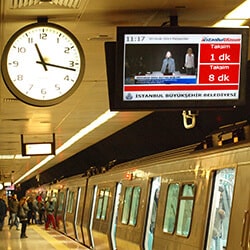
Istanbul Metro
Turkey
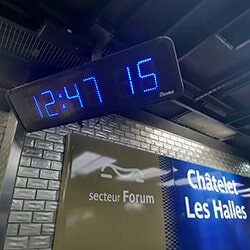
RATP
France

